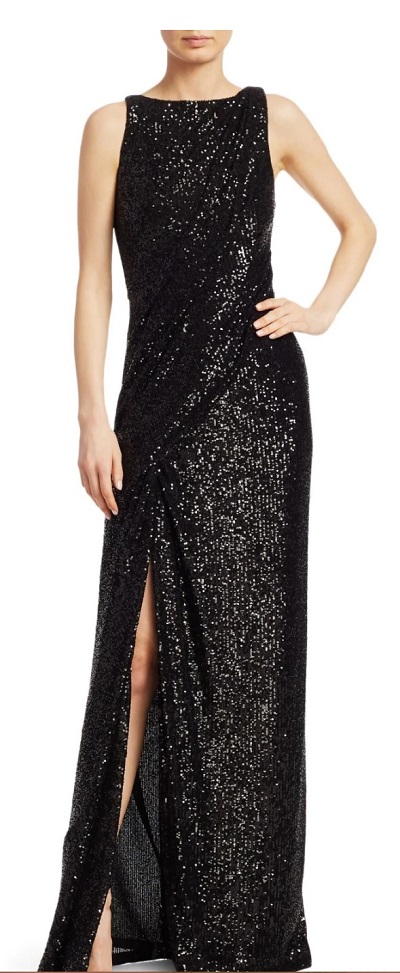
If Forever 21’s bankruptcy signals an end to fast fashion styles and shoddily manufactured trend pieces, then the closing of 350 stores worldwide will be worth it. One of several clothing outlets that showcase poorly made clothes sewn together with sloppy seams, not enough fabric for even the most minor alteration, no extra buttons, and zippers that hitch at every metal tooth, Forever 21 contributes to the vast international textile waste stream as well as women going out into the world looking poorly put together at best.
Fast fashion is a retail term for factory-produced, mass-market, inexpensive clothing that captures the latest trends as soon as they step off the catwalk. It isn’t just the speed from runway to rack that signifies fast fashion, but how fast it moves from closet to trash heap. In biting the look without matching the quality, low-end, high-volume retailers beat the high-end fashion houses in availability and price.
H&M, Zara, Forever 21, and the brand name “factory” stores such as those offered by Gap, J. Crew, and Banana Republic, have been joined by even less attractive online-only stores that sell direct from factory to consumer, taking weeks to arrive from Chinese manufacturing centers. The prices are right, but the pieces are not, often looking like a sad facsimile of the online images.
There’s no reason women should have to wear these items simply because they appear to be more affordable than quality apparel. Buying $200 worth of trash fashion is just as expensive as buying one or two items for that same total. The difference is that the quality pieces will last, where the other items turn to waste within just a few wears and washes.
Summer is a bit of an exception. It’s hard to dispute Old Navy for easy summer dresses that last one season, ending up in the trash after becoming stained with sunblock and faded from overexposure to surf and sand. But if we’re talking about lasting pieces that will serve a woman over years or even decades, we’ve got to look beyond the fast fashion trends to lasting looks.
Fast Fashion Is All About Quantity Over Quality
The trend of fast fashion pushes women into ugly clothes, creates an economically and environmentally unfriendly consumer-driven wasteland, and forces clothing designers to work on new looks for mini micro seasons that barely last a few months. The previous fashion cycle consisted of four seasons, and designers could be more thoughtful in their approach. They could work on styles meant to be worn both this winter season and next, classic basics, and save the really incendiary looks for the runway, evening gowns, and bright summer trends.
Fast fashion emporiums aren’t furthering new designs, just new timelines. Because of the shoddy workmanship, chintzy fabrics, and high sales volume, they are able to rip off upmarket designers, remaking their looks to appeal to consumers who are quick to buy cheap pieces, even if they’ll have to throw them out a few months down the road. This means high-end fashion houses pay full price for designers without being able to reap the full benefit of their labor, or capture the ingenuity and imagination of detailed and well-thought-out pieces.
As an example, consider a “twist front” detail. The way it drapes on this Forever 21 model looks frumpy, like the fabric has no movement and would stick in all the wrong places.

This dress from Alexander Wang is much sleeker, and to me is the best version.

And here is a high-end gown from Rachel Gilbert, with the same detail. The gown is lovely but not something there’s much use for.

If I had to choose one, I’d go with the Wang. I could wear it to work with a blazer, wear it to dinner or cocktails, dress it up with heels, or dress it down with boots. It’s versatile and easy.
For all but the seriously high-end lifestyles, expensive clothes are both financially impractical and practically impractical. Rushing from home, to school, to work, to after-school activity pick-up doesn’t leave much room for delicate fabrics that are dry clean-only. But there’s lots of room in between Balenciaga and Forever 21, and many of the classic basics have caught up to contemporary lifestyles.
Even though it means fewer articles of clothing in your closet, you’ll always have something to wear if you choose just a few well-made pieces each season. And price is not always an indicator of quality. The fast fashion craze had mid-range designers struggling to make a profit, and they too began cutting corners just like their downmarket competitors.
Ditch Forever 21 For High-End — Even Second-Hand
There are things to look out for at any price point. Before buying, test the zippers to make sure they work and are properly sewn in. Check the hems. Most of the hems on factory-made garments are not fully finished, but if there’s enough fabric, you have room to adjust it. Make sure the fabric is breathable and washable. Avoid rayon. Natural fibers are still best, and with care, stand up to the most use.
Look at the seams to see whether the thread pulls against the fabric when you give it a little tug or if it stays firm. No matter how cute the piece is, if it falls apart after a few washes, or even a few seasons (if you paid real money for it), it’s just not worth it.
Classic pieces are not found at the large retailers that specialize in quick turnaround of fad pieces that aren’t meant to stand the test of time and wear. However, while the price tags can be off-putting, many really amazing pieces are available second-hand, either in consignment shops, on eBay, or on any of the many online second-hand clothing retailers that have sprung up. Because these clothes are well made, they look good on the second, third, or fourth owner down the road.
While second-hand clothes are less expensive than newer pieces by the same fashion companies, they are also better made. The workmanship on a Dior blouse from the 1980s has finished seams with no hanging threads, perfectly turned hems, and fabric that withstands wear. Items that sold for hundreds of dollars off the rack came with something of a high-quality craftsmanship guarantee back then.
One of my most prized possessions is an Yves Saint Laurent blouse that my mom bought at a second-hand shop in Paris in the 1980s. It has since had a few moth holes rewoven and buttons resewn, but it still looks great and holds up season after season. They just made clothes better back then.
Online vintage sites are springing up all over the place, such Thredup and The RealReal, although they can still be a bit pricey. The best thrift or consignment shopping is in upscale neighborhoods, where people cast off what the rest of us would hold onto.
One of the reasons given for the decline in sales at Forever 21 is that the younger generation is less interested in polluting the environment as well as their closets, and it doesn’t want to add textile waste to the mix. Buying second-hand is a great way to abate that problem, while ensuring you get better pieces in more unique styles.
If you can afford it or are willing to save up, or if you can simply budget your spending to only buying one or two high-quality pieces a year, you can structure your wardrobe around easy, authoritative, base pieces. For reasonably priced, good basics, my favorites are skirts and dresses from DKNY and Theory, pants from Kobi Halperin or Banana Republic, and more blouses in my closet are from J. Crew than I’d care to admit.
These items are easy to wear and easy to pair. As opposed to the fast fashion looks, these clothes look better on their own, wear better on the body, and allow a woman to look good without always having to follow the latest fashion fads. Forever 21 just can’t match it. Even if its prices look good on the rack, its clothes just don’t look good on most women.









